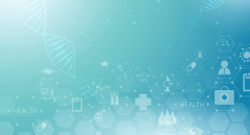What's on this Page
What preparation is necessary to have for the unexpected emergency department delivery?
Preparation is key, as most ED deliveries are “unexpected.” A prearranged plan should be set in motion as soon as birth is imminent. That plan should include the assembly of personnel who are best able to take care of the newly born infant.
A brief history should be obtained if possible, because it may affect the resuscitation. Most newborns who will need resuscitative interventions can be identified prior to birth.
Equipment and medications specifically for a neonatal resuscitation should be kept in a designated tray so they are quickly available.
Periodic inspection of this equipment for proper functioning and expiration dates of medication should become part of the routine upkeep of the neonatal resuscitation tray.
Equipment and Drugs for the Neonatal Resuscitation
| Equipment |
| Gowns, gloves, and masks |
| Warm towels and blankets |
| Bulb syringe |
| Meconium aspirator |
| Suction catheters (sizes 5-10 F) |
| Face masks (sizes premature, newborn, and infant) |
| Oral airways (sizes 000, 00, 0) |
| Anesthesia bag with manometer (preferably 500 mL, no larger than 750 mL) |
| Laryngoscope with straight blades (sizes 0 and 1) |
| Spare bulbs and batteries |
| Stethoscope |
| Endotracheal tubes (sizes 2.5, 3.0, 3.5, 4.0) and stylet |
| Tape |
| Umbilical catheters (3.5 and 5 F) |
| Umbilical catheter tray |
| Three-way stopcocks |
| Nasogastric feeding tubes (8 and 10 F) |
| Needles and syringes |
| Chest tubes (8 and 10 F) |
| Magill forceps |
| Radiant warmer |
| Cardiorespiratory monitor with electrocardiogram leads |
| Pulse oximeter with neonatal probes |
| Suction equipment |
| Oxygen source with flowmeter and tubing |
| End-tidal CO 2 detector |
| Laryngeal mask airway (optional) |
| Drugs |
| Epinephrine 1:10,000 |
| Naloxone |
| Sodium bicarbonate |
| Dextrose in water 10% |
| Normal saline, Ringer’s lactate |
| Resuscitation drug chart |

